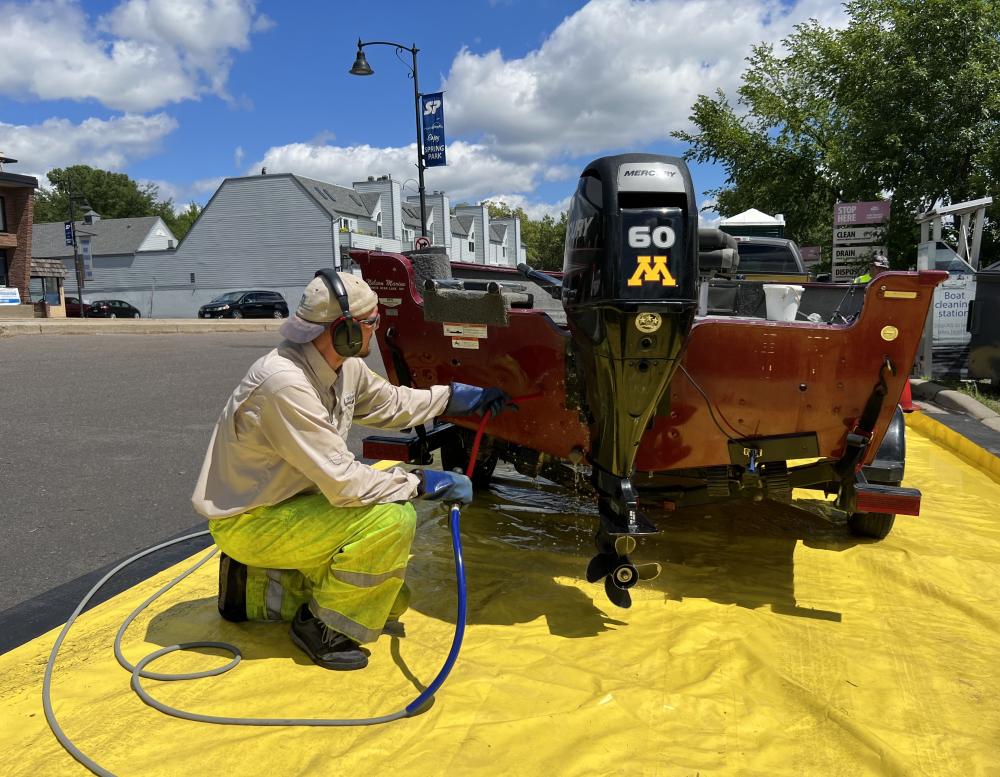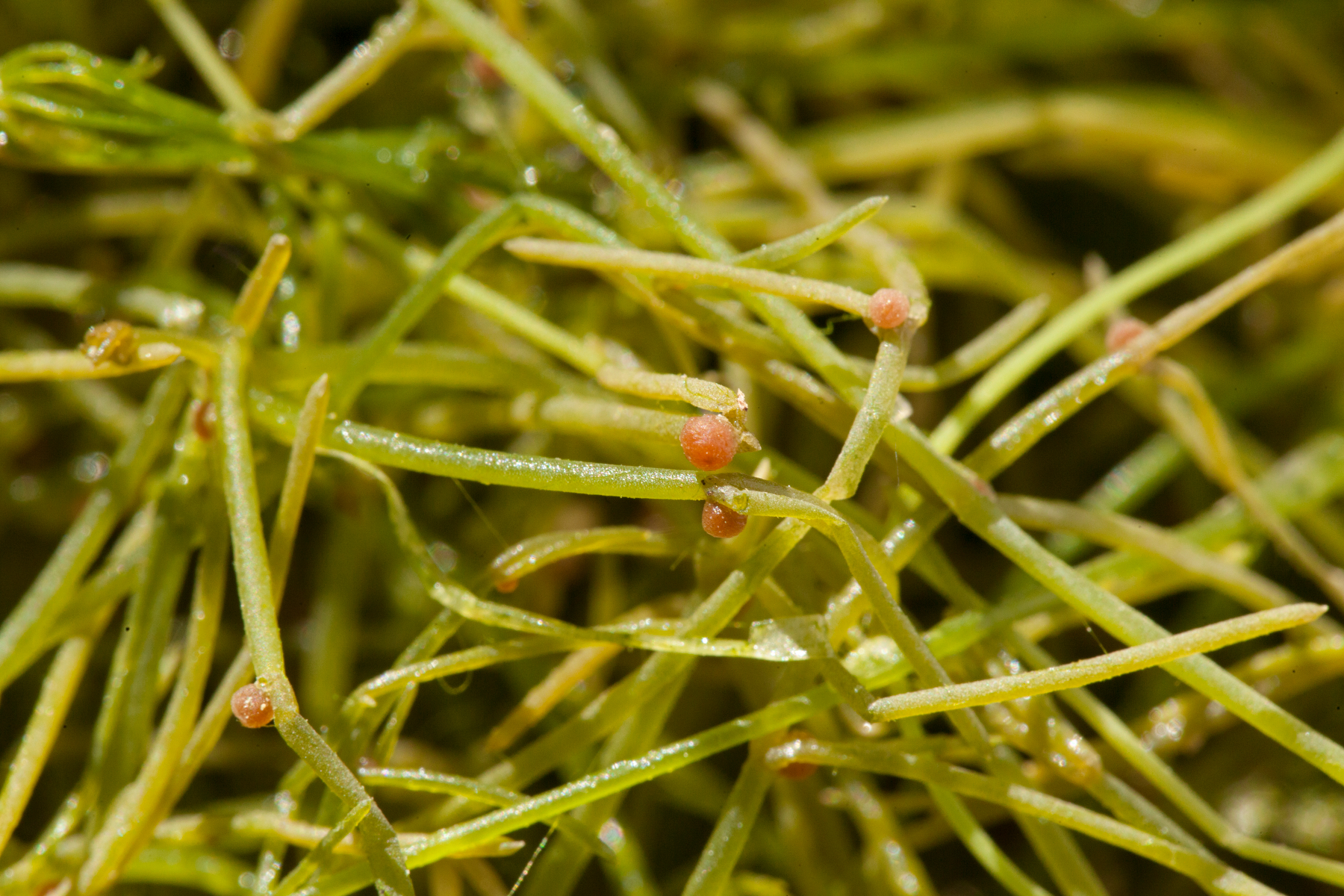Species without borders: How collaboration could improve management of aquatic invasives
April 17, 2024

Examining a boat at a watercraft inspection station. Photo courtesy Minnesota Aquatic Invasive Species Research Center.
New research led by Dr. Amy Kinsley, assistant professor in the College of Veterinary Medicine, examines how collaboration between counties could improve the management of aquatic invasive species in Minnesota.
Aquatic invasive species (AIS)—species that have spread or been introduced beyond their native range and are causing harm—pose a significant threat to ecosystems and conservation efforts globally. In Minnesota, over 40 species of invasive organisms infect the state’s waterways, according to the Department of Natural Resources. To date, these species have been detected in 11% of the state’s lakes—but AIS can remain undetected for long periods of time, spreading through both natural and human pathways.
In the United States, environmental management efforts have shifted towards collaborative conservation, emphasizing local participation. Minnesota exemplifies this bi-level approach, with local governments playing crucial roles in AIS prevention and management, supported by state funding allocations.
For example, various agencies operate boat inspection and decontamination stations at lake access points, as a major strategy to prevent AIS from hitching rides to new lakes and rivers on recreational boats and other watercraft. “Each county receives different amounts of funding and develops its program according to local-level objectives,” Kinsey describes. “While this approach allows local governments to respond to the needs and priorities of their communities more effectively, it can also lead to fragmentation, resulting in duplication of inspection efforts or challenges in coordination, which can impact the efficiency of limited resources.”
Kinsley’s research builds on a previous study that modeled both state-level and bi-level management strategies and found that bi-level allocation of funds is less efficient than state-level prevention decisions. For this study, Kinsley looked at the potential impact of collaborations between counties in Minnesota to bolster bi-level management strategies.
Specifically, the team modeled a collaborative approach to watercraft inspection in relation to four aquatic invasive species: Eurasian watermilfoil, spiny waterflea, starry stonewort, and zebra mussels. They identified prospective collaboration networks, each representing a group of counties with a relatively high number of potentially infested boats moving between them. Using boater movement data, they analyzed the connections within those groups to determine if collaboration could increase the efficiency of county-led watercraft inspection programs aimed at limiting the spread of AIS.

Considering a scenario that budgets for 400 inspection stations, the researchers found that a state-wide approach (where county boundaries are not considered) is the most efficient, resulting in the inspection of approximately 80% of the estimated risky boats moving between lakes in the state. In addition, the collaborative approach outperformed the non-collaborative, county-level approach by 7–8%. “This might sound trivial,” Kinsey notes, “but it equates to about 65,000 more risky boat inspections per season.”
These findings build on the team’s previous work to suggest that strategic inter-jurisdictional collaborations could help to improve efficiency while preserving some of the benefits of local-level management. Such an approach could both empower local governments to address AIS prevention in a manner that suits their unique circumstances, while also ensuring the optimal use of available resources and the effectiveness of AIS prevention efforts across the state.
Kinsley’s team continues to update their findings to include more recent data and to explore different models for collaboration. The research was funded by the Legislative-Citizen Commission on Minnesota Resources (LCCMR), stewards of the Minnesota Environment and Natural Resources Trust Fund (ENRTF), and the findings will be used by the state legislature in developing a state-wide strategy for managing AIS.
You can explore outputs from the team’s model on AIS Explorer. Read the full study in Biological Conservation.


